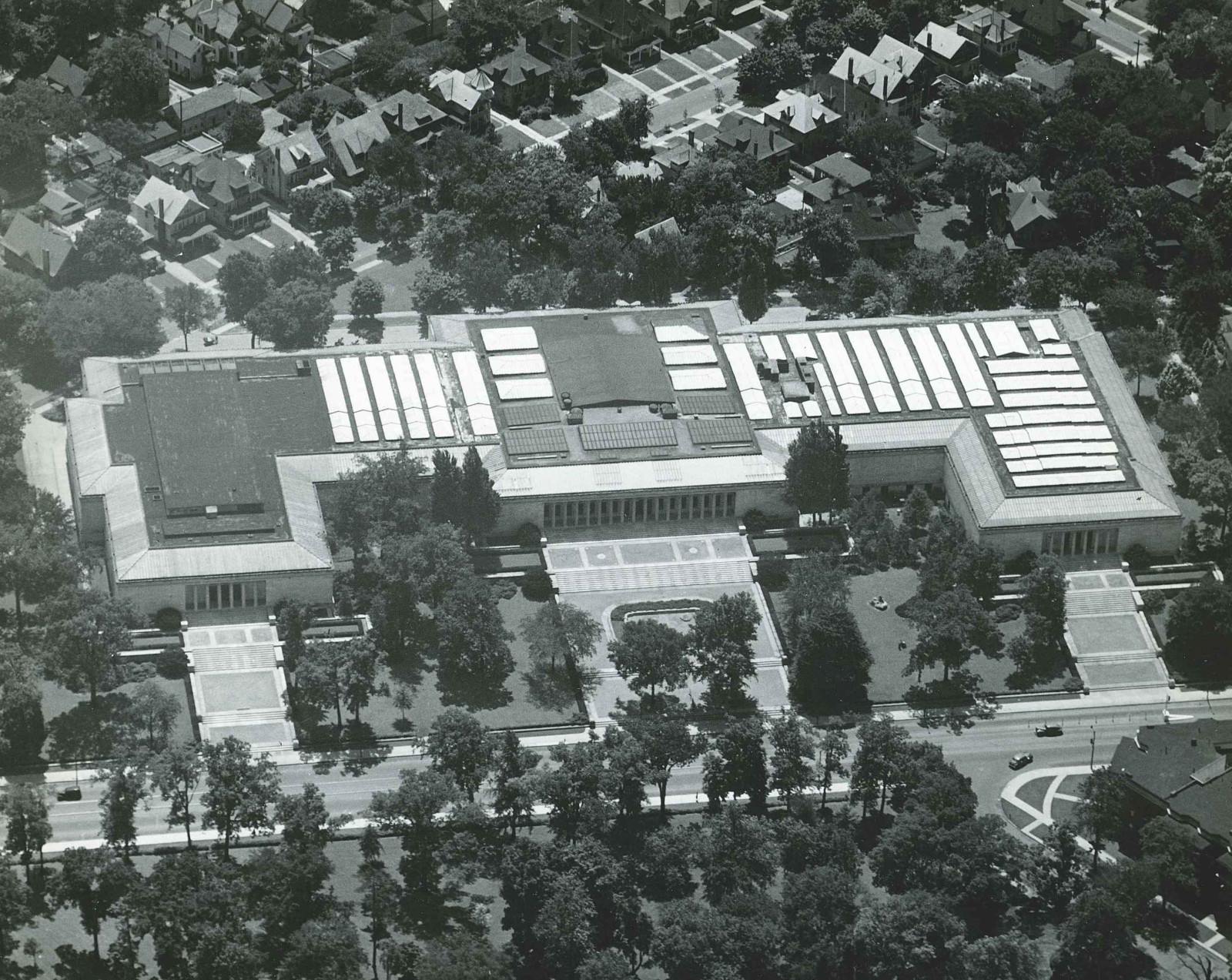Land Acknowledgment
The Toledo Museum of Art is located on ancestral homelands of the Erie, Kickapoo, Odawa, and Seneca. We recognize that many other Native tribes have also conducted trade on, and called this region their home, including the Lenape, Miami, Ojibway, Peoria, Potawatomi, Sauk, Shawnee, and the Wyandotte. We at the Museum acknowledge and honor the past, present, and future lives of Indigenous peoples in the Toledo area and thank them for their resilience as stewards of the land on which the Museum’s campus now resides.
Our Accountability
As a cultural institution, it is our responsibility and aim to understand and continually share knowledge about the complicated history of colonialism in the space we now occupy, the peoples who were here before us, and the enduring presence and diversity of Indigenous peoples in our region. In keeping with the Museum’s vision of creating a culture of belonging, we commit to building meaningful relationships with Indigenous communities and working to dismantle the systemic invisibility of Indigenous peoples. In devising this statement and writing the history of this land, we have learned a lot, but this is not the end of the process. Through shared knowledge and exchange, we will continue to learn and enrich this history as we come to know more.
Indigenous Ohio and The Toledo Museum of Art
The area that is now Ohio (named for the Iroquois word for the Ohio River: “it is beautiful”) has seen Indigenous cultures going back to at least 7500 BCE. Mound Building Woodland peoples like the sophisticated Fort Ancient and Adena cultures built earthen effigy and burial mounds in southern Ohio beginning around 2,000 years ago. Two prehistoric mounds were known to exist in the Toledo vicinity: on the south bank of Swan Creek at the intersection of Oliver and Clayton streets, and on the right bank of the Maumee River at the intersection of Fort and Fassett streets (“Maumee” is the French colonial name for the Miami Nation and the Miami River). Later Native cultures in the state consisted of four major cultural divisions: the Lenape in the Muskingum Valley in eastern Ohio; the Miami in the Miami Valley, western Ohio; the Odawa and Wyandotte in the Maumee River Valley of northwest Ohio; and the Shawnee along the Scioto River in southern Ohio.
Europeans took over Indian lands using the ancient Roman concept of terra nullius—a term meaning “nobody’s land”—in which the land was assumed to be unoccupied. When it became clear the land was, in fact, inhabited, colonists justified its seizure by declaring the land as “uncultivated.” With the growing numbers of European settlers in the 18th century, Ohio was deemed “Indian Territory” and many Indigenous peoples from the eastern part of the country were displaced to Ohio lands. After the Revolutionary War (1765–1783), the U.S. Government entered into treaties with Indian Nations—treaties that it later violated—in order to “lawfully” shrink this territory. With the 1830 Indian Removal Act, most Indigenous peoples living east of the Mississippi River, including Ohio, were forcibly removed by the U.S. Government to reservations in the West during the 19th century. As a result, while more than a dozen tribes have ties to Ohio lands, there are now no federally recognized tribes in the state.
Located near the mouth of the Maumee River, at the edge of Lake Erie, present-day Toledo was an active site of Indigenous travel, trade, and meeting. The Museum was built on land ceded to the United States in the 1795 Treaty of Greenville. In 1826, the land—which at that time formed part of the Michigan Territory—was sold by the U.S. at the direction of President John Quincy Adams to John G. Forbes. Nearly a decade later, during the property dispute that was the Toledo War, Forbes sold the land to Edward Wade on August 8, 1835. Shortly thereafter, on November 14, 1835, Wade sold the land to Maurice Wakeman and Jesup W. Scott, grandfather to one of the Museum’s founders, Florence Scott Libbey. In 1908, Florence and her husband, Edward Drummond Libbey, donated the land as the site for the present Toledo Museum of Art. Additional parcels of land were added in the ensuing years to form our nearly 40-acre campus. While the known history of the land on which the Toledo Museum of Art resides is complicated and incomplete, we are committed to further understanding this history and the role museums have played in colonization with the goal of dismantling the systemic invisibility of Indigenous peoples.
